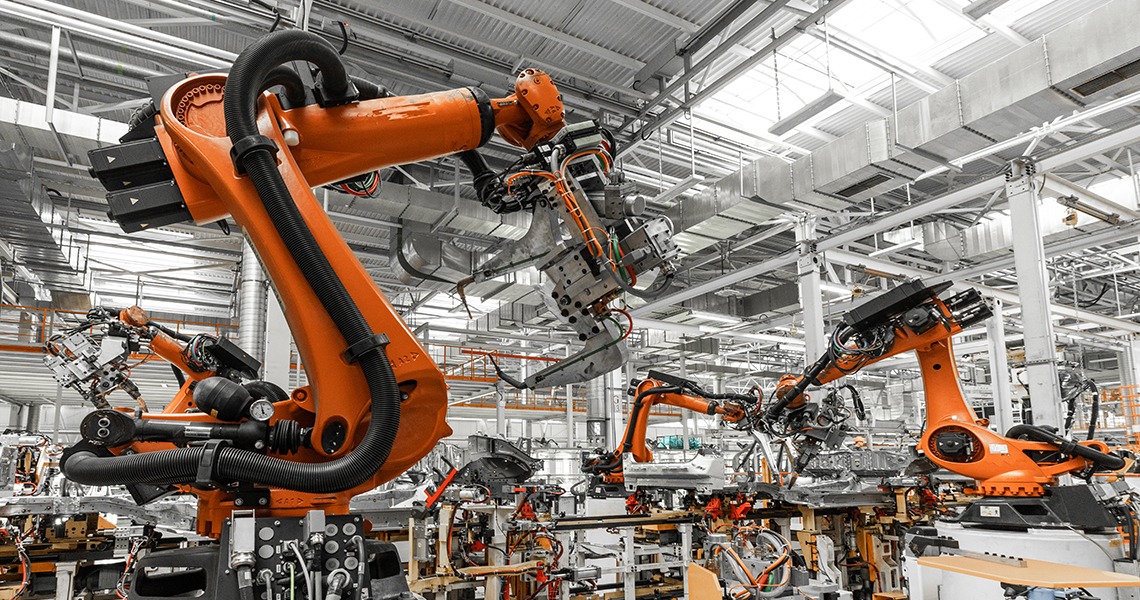Indoor geolocation in an industrial plant makes it possible to determine the precise location of objects or people within a factory’s indoor environment. This type of technology enables real-time tracking, monitoring and management of assets, personnel and equipment within plant facilities. But how does indoor geolocation typically work in a factory?
How does indoor geolocationwork in a factory?
1. Infrastructure setup: To enable indoor geolocation, the factory needs to install a network of sensors or beacons throughout the facility. These sensors can be Wi-Fi access points, Bluetooth low energy beacons or other specialized devices. These devices emit signals that are used to determine the position of objects or individuals.
2. Signal detection: devices carried by personnel or assets, such as smartphones or tablets, receive the signals emitted by the sensors. These devices are equipped with receivers or sensors that can detect and interpret signals from the infrastructure.
3. Trilateration or triangulation: once the signals are received, the devices use techniques such as trilateration or triangulation to calculate their position within the factory. Trilateration consists of measuring the distances from the device to at least three known reference points (sensors), while triangulation consists of measuring the angles between the device and several reference points.
4. Positioning calculation: using signal strength, time of flight or angle measurements, devices or a central system can calculate the precise position of the device within the factory’s interior space. This information can be transmitted to a central monitoring system or displayed on a map or floor plan.
5. Data visualization and management: The collected position data can be displayed on a user interface, such as a control panel or mobile application. It allows managers or factory personnel to monitor the real-time location of assets, track workflow progress, optimize logistics or improve safety protocols.
6. System integration: Indoor geolocation systems can be integrated with other factory systems and technologies, such as asset management systems, inventory control systems or production management systems. This integration enables efficient asset tracking, automated workflows and data-driven decision making.
Type of technology for indoor geolocation
It is important to note that the choice of technology that makes indoor geolocation possible depends on the specific requirements, budget and environmental factors of each factory. Often, a combination of different technologies can be used to achieve the desired level of accuracy and functionality in indoor geolocation systems.
There are several technologies commonly used for indoor geolocation in industrial environments. The main ones are:
– Wi-Fi based positioning: Wi-Fi access points can be used to triangulate the position of devices within a factory. By measuring the signal strength and signal quality of different access points, the location of a device can be determined. Wi-Fi positioning is widely adopted due to the prevalence of Wi-Fi infrastructure in most indoor environments.
– Bluetooth (Beacons): these are small devices that emit low power signals, which can be received by Smart phones or other devices equipped with Bluetooth capabilities. By detecting and measuring the signal strength of several, the location of the device can be determined. This technology is often used for asset tracking or personnel monitoring within a factory.
– Ultra-Wideband (UWB) technology: UWB technology uses short-range radio waves to accurately determine the position of objects or people in indoor spaces. UWB-based systems offer high accuracy (50-60 cm) and precise positioning capability, making them suitable for applications where accurate location tracking is required.
Ultimately, indoor geolocation in a factory provides valuable information on asset utilization, worker productivity, safety and overall operational efficiency. It can help streamline processes, reduce errors, improve response times and optimize resource allocation in the factory environment.
4Tracking, the Zerintia Technologies solution for the traceability of employees and assets in Industry
4Tracking is Zerintia Technologies‘ IoT-based solution for the integration and management of various sources of information, indoor and outdoor geolocation, exploiting all data in a comprehensive way.
4Tracking integrates with another Zerintia module, 4Action, to monitor positioning data, detect location-based events and trigger actions.



